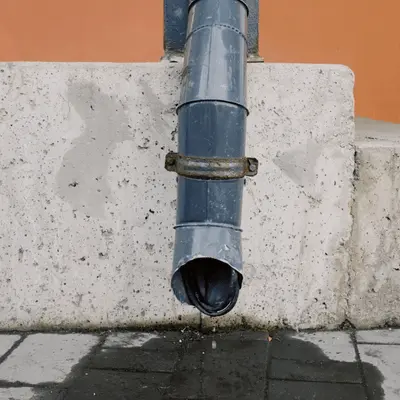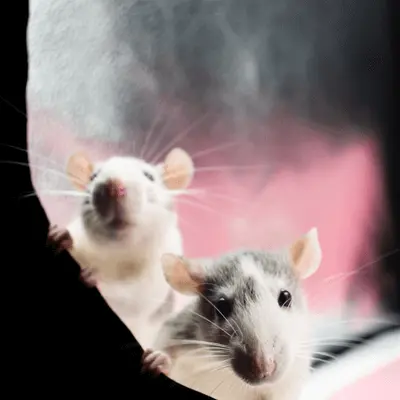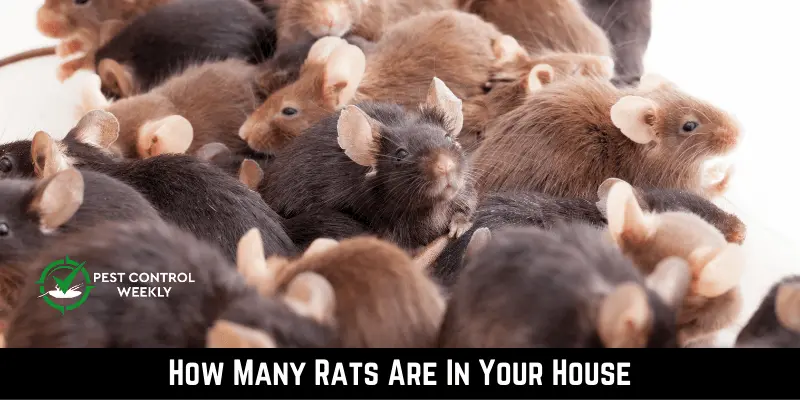People say that if you see one rat, there is likely more nearby. If you see a furry creature scurrying across your kitchen floor, you should act quickly before more of them come. But how do you know how many rats are in your house?
There are several signs you can look out for to determine the size of the infestation:
- Rat droppings
- Gnaw marks
- Holes
- Nests
- Noises
In this blog, we’ll talk about some of the best ways to figure out how big your rat problem is and what you can do to get rid of these pests for good.
How Many Rats Are Typically In A House?
The number of rats in a house can vary depending on its condition, how much food and shelter it has, and what’s happening in the area. A rat problem can usually involve anywhere from a few rats to dozens or hundreds of rats.
If rats have found a good source of water and food in your residence, they can quickly start having babies and grow into a big group. In agreement with the Journal of Thermal Biology Female, rats can have 5–10 litters a year, with 5 to 10 babies in each litter.
A single rat pair can have up to 50 babies in a year, which can quickly lead to a big problem. It’s important to take care of rat problems as soon as possible so that the number of rats doesn’t grow.
From Where Do Rats Come?
It turns out that the rat came from southeast Asia, moved to northeast Asia around 200 BCE, stayed there for a while, and then moved to the Middle East around 3,600 years ago. Then, about two thousand years ago, the rat’s family tree shows that rats moved to Africa. Rats can come from many different places, such as:
Sewers

Rats can get into your home through broken pipes or holes in the plumbing. They can also get into your home through sewers and drains.
Outside

Rats are adaptable animals that will find food, water, and a place to live wherever they can. They can enter your home through holes in your back wall or foundation or through spaces around doors and windows.
Due to Rat Infestation

If you have neighbors that suffer from rat infestations, there is a chance that rats will find their way into your home in quest of food and shelter.
Transportable Objects

Rats can also get into your home through things you bring in, like boxes, furniture, or plants with rat droppings or other materials.
Signs That Rats Are In Your Home
There are a few signs that rats might be living in your home, such as:
- Rats’ droppings are usually about the size of a grain of rice and are oval and dark in color. Look for rat droppings along walls, cabinets, and basements where rats are likely to go.
- Rats’ teeth never stop growing, so they need to chew on things to keep them in shape. Check the wires, baseboards, and other surfaces for signs of chewing.
- Rats leave tracks in dusty or soft things, like insulation or dirt.
- They have oily fur that can leave grease marks on walls and floors.
- Rats are active at night, and you might hear them running, scratching, or squeaking in your home’s walls, attic, or other parts.
- They can use different things, like shredded paper, fabric, or insulation, to build their nests. Look for these things in places that are hard to reach, like your attic or crawl space.
- Rats will eat almost anything, even food for people and pets. Look for chew marks or holes in food packages and food crumbs spread around.
Signs Of Rats Under The Decking
Rats can nest and hide in the space under the decking, which is sheltered. Here are some signs of rats under the deck:
- Look for rat droppings where rats are likely to go, like along the edges of the deck or in planters nearby.
- Using shredded paper, fabric, or insulation, rats might build nests under the decking.
- Look for signs of nests that are hard to see under the decking.
- Check for signs of chewing on the wood decking or things near it.
- Rats can leave tracks in dusty or soft materials under the decking, like dirt or mulch.
- Rats are active at night and can be heard running, scratching, or squeaking under the decking.
- Rats may dig holes in the ground under the decking so they have a way to get in and out.
If you think there are rats under your decking, you should take care of the problem as soon as possible to stop the problem from getting worse.
Risks Of Having Rats In The House
Having rats in the house is dangerous in a number of ways. The following are some of the most serious risks:
- Rats can chew on wood, plastic, and even electrical wiring, which can damage the house and make it more likely that an electrical fire will start.
- Rats carry diseases and parasites that can be passed to humans, such as salmonella, hantavirus, and rat-bite fever. They can also get their urine and poop on food and surfaces, which can be bad for human health.
- Some people, especially children, are allergic to rat droppings and urine, which can make them sick.
- Rats can have a lot of babies quickly and live in large groups, which makes it hard and expensive to get rid of them.
- Rats can bite and scratch people, especially if they feel scared or backed into a corner. These cuts and scrapes can cause infections and other health problems.
How Many Rats Can Live in the Same House?
A study in the Journal of Urban Ecology says that a couple of rats can have up to 2,000 babies in a year if conditions are favorable. This means that the rat population multiplies.
According to another study published in the Journal of Mammalogy, a single female rat can have up to 84 babies in a year, and each of those babies can start having babies of their own at about three months old.
A nest inside a house will usually have between 5 and 10 rats, but it’s important to know that there can be more than one nest with more than one colony of both young and adult rats.
So, if nothing is done to stop them, there can quickly be dozens or even hundreds of rats in a house.
How To Prevent Rats From Entering Your Home?
When rats enter your home, they can cause a lot of trouble. They can damage your property, spread diseases, and make you feel uncomfortable. You can stop rats from coming into your home by doing the following:
- Seal any points of entry: Rats can get into your home through very small holes, so it’s essential to seal up any holes or gaps in your walls, floors, and roof.
- Clean your house: Rats like food and trash, so keeping your home clean and neat is important.
- Clean up your yard: Debris and clutter can attract rats. Keep your yard clean and free of trash, and cut back any plants that might give rats a place to hide.
- Use traps: If you already have rats in your home, traps can effectively eliminate them. Live traps, glue traps, and traps that snap shut can all work.
- Get help from a professional: If you have many rats or are uncomfortable dealing with them, you might hire a pest control service.
How To Estimate How Big The Infestation Is In House?
There are a few things you can look for to figure out how many rats are in your home:
Rat Droppings
Rat poop can be an excellent way to determine how many rats are in your house. Look for the following:
| Quantity | The more droppings you find, the more likely there are a lot of rats. Check where rats might go, near food sources or along walls. |
| Freshness | If the droppings are new, rats are still living in your home. Older droppings could mean that the rats have moved on or that there aren’t as many of them as there used to be. |
| Size | Rat droppings are usually about the size and shape of a grain of rice, but the size can change depending on the size of the rat. If the droppings are bigger, it could mean that the rats are bigger or that the infestation is further along. |
| Location | Look closely at where the droppings are. If they are all in one place, like a pantry or basement, rats spend a lot of time there and the problem may worsen. |
Gnaw Marks
Gnaw marks can also give you a good idea of how many rats are in your home. Look for the following:
| Quantity | The more gnaw marks you see, the more pests there are likely to be. Check your home’s wood, plastic, and other materials for gnaw marks, especially in places rats like to go. |
| Freshness | If the holes are new, rats still live in your home. Older gnaw marks could mean that the rats have moved on or that there are not as many of them as there used to be. |
| Size | You can also tell how big the rats are by how big their teeth marks are. If the holes are bigger, it could mean that the rats are bigger or that the infestation is further along. |
| Location | Notice where the gnaw marks are. If they are all in one place, like a pantry or basement, rats spend a lot of time there. |
Holes
Holes can also give you a good idea of how many rats are in your house. Look for the following:
Quantity | The bigger the infestation is likely to be, the more holes you find. Check the walls, floors, and ceilings for holes, especially in places rats like to go. |
| Freshness | If the holes look like they were made recently, rats still live in your home. If you find old holes, it could mean that the rats have moved on or that there aren’t as many of them as there used to be. |
| Size | You can also tell how big the rats are by how big the holes are. If the holes are bigger, it could mean that the rats are bigger or that the infestation is further along. |
| Location | Be aware of where the holes are. If they are all in one place, like a pantry or basement, rats spend a lot of time there and the problem may worsen. |
Nests
Nests can also give you a good idea of how many rats are in your home. Here is what to look for:
Quantity | The bigger the problem is likely to be, the more nests you find. Check for nests in attics, basements, and crawl spaces where rats are likely to live and have babies. |
| Size | You can also tell how big the rats are by how big their nests are. Rats may be bigger if their nests are bigger, or the infestation may be further along if the nests are bigger. |
| Location | If they are all in one room or part of the house, the rats spend a lot of time there, and the infestation may be worse there. |
Noises
If you think your house is full of rodents, you can listen to certain sounds to figure out how bad the problem is. Here are some sounds that could indicate pests or rodents around:
| Sounds Like Scratching or Biting | You probably have mice or rats in your home if you hear scratching or chewing on your walls, ceiling, or floors. Since these animals are active at night, you may listen to these sounds while trying to sleep. |
| Sounds Like Rustling or Running | If you hear noises like rustling or scurrying in your walls, it could signify that there are more rodents than you thought. There could be more than one animal making these sounds. |
| Noises That Squeak or Chirp | If you hear high-pitched chirping or squeaking sounds, birds or bats are probably nesting in your attic or walls. These animals can do a lot of damage to your home, so you should take care of the problem right away. |
| Sounds That Buzz or Hum | It could mean a beehive or wasp nest in or near your home if you hear buzzing or humming sounds. These pests can be dangerous, so you should hire a pro to eliminate them. |
| Sounds That Click or Tap | If you hear clicking or tapping sounds in your walls, it could be termites or carpenter ants. These pests can do a lot of damage to your home’s structure, so you should take care of the problem right away. |
FAQs
How Do You Know If You Have Multiple Rats?
If you find a lot of rat droppings, gnaw marks on furniture, baseboards, or wires, nesting materials like shredded paper or fabric, and grease marks on the walls and floors, you may have more than one rat in your home.
Also, if you’ve seen more than one rat in your house at the same time, it’s clear that you have more than one.
How Do You Estimate The Number Of Rats?
It can be hard to tell how many rats are in your home, but there are some signs to look for. One way is to count the rat droppings and use that number as a rough estimate.
You can also get an estimate by looking for chew marks on wires and other materials. You can also set traps and watch them find out how bad the problem is. It’s important to remember that a professional pest control service can give you more accurate estimates and better solutions.
How Do I Know If The Rats Are Gone?
It can be hard to tell if the rats have left your home, but there are some signs to look for. There are no new rat droppings, no new gnaw marks, and no rats to be seen. This is a good sign that the rats are gone.
Even if you think the rats are gone, you should keep an eye out for any signs of their presence in your home to stop them from coming back.
Will Rats Go Back To The Same Place?
Yes, rats tend to return to the same place if it gives them easy access to food, water, and a safe place to live. This is especially true if the area still needs to be cleaned and sanitized well enough to eliminate any rat pheromone trails. To keep rats from returning to the same place, taking preventive steps like sealing off entry points and keeping the area clean is essential.
How Far Do Rats Go From Where They Live?
How far they go also depends on how close they are to places where they can get food and water. Rats are adaptable animals that can live in many different places. This gives them the ability to spread out if they need to. Rats can go as far as 300 feet from their nests to find food and water. But they usually stay close to their nests and will only go farther away if they have to.
How Many Rats Are There If You See One?
How far they go also depends on how close they are to places where they can get food and water. Rats are adaptable animals that can live in many different places. This gives them the ability to spread out if they need to.
Rats can go as far as 300 feet away from their nests to find food and water. But they usually stay close to their nests and will only go farther away if they have to.
Will Rats Leave On Their Own?
Once rats have made a nest in your home, they are not likely to leave on their own. Rats are very flexible and will stay where they can quickly get food, water, and a place to live.
If you don’t take care of a rat problem, it can cause more damage to your home and make diseases more likely to spread. To get rid of the infestation, taking preventative steps like sealing off entry points and calling a pest control professional is essential.
When Do Rats Come Out In Your House?
Rats come out to find food, water, and a place to live. This can happen at any time, depending on what they need and what’s available.
Rats are mostly nocturnal, meaning they are most active at night. But they can also be active during the day if they feel safe and not bothered. If you see rats during the day, it could mean that there are a lot of them or that there is a lot of competition for food.
How Many Rats Are Considered An Infestation?
The number of rats that make up an infestation depends on many things, such as the size of the property, the availability of food and water, and local laws. But in general, seeing more than one rat in your home or on your property could mean you have an infestation.
A single rat can quickly turn into a large colony because they breed quickly, can damage property, and spread disease. It is important to act immediately to eliminate the infestation and stop any more damage from happening.
What Happens If You Disturb A Rats Nest?
Rats defend their nests aggressively, so it can be dangerous to mess with them. If you mess with a rat’s nest, the rats may come after you and bite or scratch you.
Also, the noise could make the rats run away, making the problem worse and spreading to other parts of your home. It is best to avoid messing with rat nests and instead call a professional pest control service to get rid of the rats in a safe and effective way.
What If Your Infestation Gets Worse After You Try To Get Rid Of Rats?
If your rat problem gets worse after you try to get rid of them yourself, it could mean that your plan didn’t work or that there are more rats than you thought. DIY ways to get rid of rats.
Also, using methods that don’t work can make the rats run away, which makes the infestation harder to deal with. To stop the problem from getting worse, it is important to hire a professional pest control company to help find and get rid of the pests.
Final Thoughts
Since rats are sneaky and often only move around at night, it can be hard to tell how many are in your home. But there are a number of things that can point to a rat problem, like droppings, chew marks, and noises.
If you see one rat or a few droppings, it might not mean you have an infestation, but if you see more rats or more droppings, it could mean you have a more serious infestation. Getting rid of the rats is important because they can breed quickly and cause a lot of damage to your home and health problems for you and your family.
References
Heather A. Green, Robert K. Rose, Growth and Survival in a Northern Population of Hispid Cotton Rats, Journal of Mammalogy, Volume 90, Issue 4, 14 August 2009, Pages 851–858,
Diana Rubel, Sergio I Nemirovsky, Irene Gorosito, Andrea Servián, Graciela Garbossa, Factors affecting canine fecal and parasitic contamination of public green spaces of Buenos Aires city, Argentina, and visitors’ perception of such contamination, Journal of Urban Ecology, Volume 5, Issue 1, 2019, juz012,
